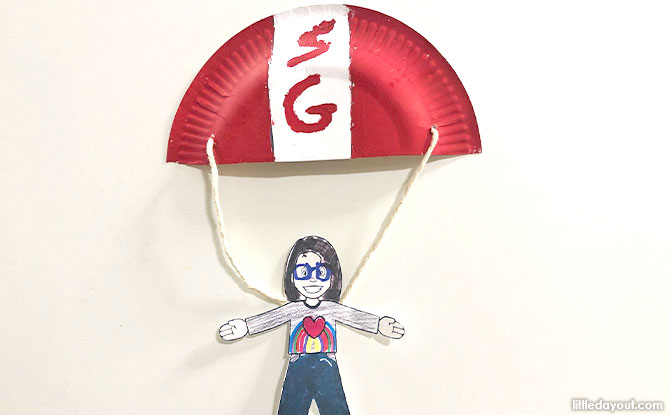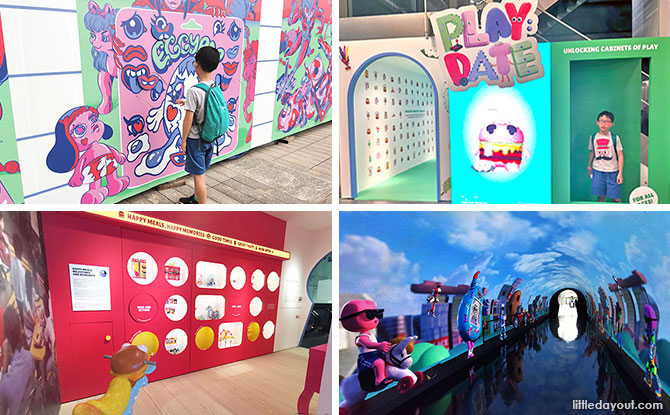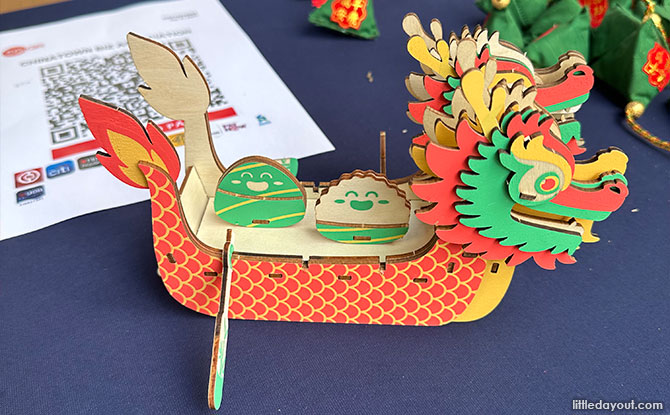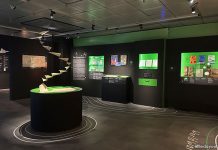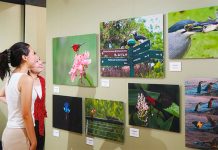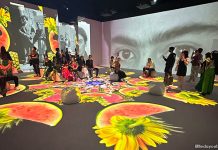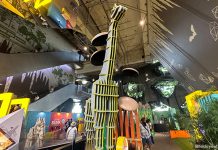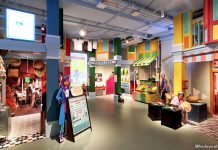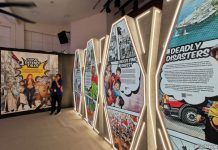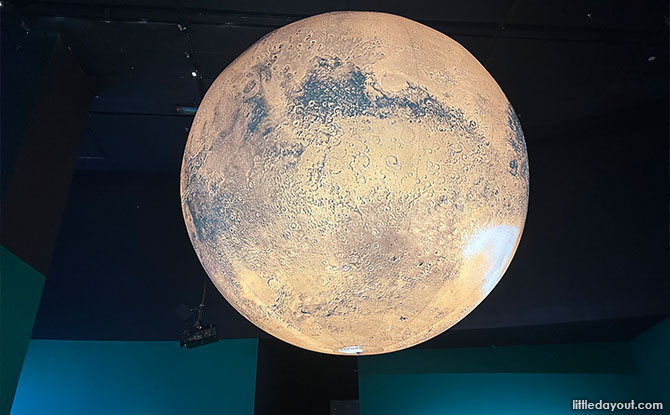
“The beauty of Mars exists in the human mind… It’s we who understand it, and we who give it meaning” goes the quote from author Kim Stanley Robinson. And this idea can be fully explored at the exhibition Mars: The Red Mirror at ArtScience Museum from 25 November 2023 till 7 April 2024.
Mars: The Red Mirror at ArtScience Museum
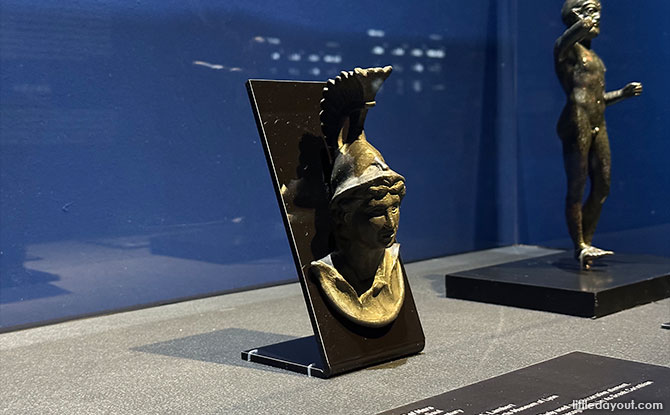
Mars: The Red Mirror explores 12,000 years of stories and meaning behind the Red Planet, from how it was perceived in antiquity to modern day ambitions to colonise the planet.
First presented in Spain in 2021 at the Centre of Contemporary Culture of Barcelona, the exhibition takes inspiration from Kim Stanley Robinson’s Mars science fiction novel trilogy – Red Mars, Green Mars and Blue Mars.
BE PSLE-READY: Join Expert Educators for Revision Boosters to Empower P6 Students
BURP: Join the Sound Collector on a Whimsical Chase at Esplanade – Theatres on the Bay
WEEKEND IDEAS: Get Inspirational Ideas of Things to Do
Its more than 300 objects, which include rare scientific manuscripts, films and contemporary works of art, are presented in three sections that span the course of history and stretch into the future.
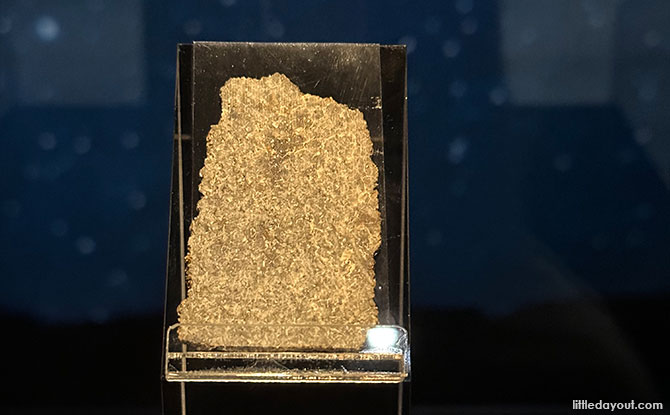
Amongst these objects is a small fragment of a Martian meteorite found in the Sahara Desert and an hour glass filled with dust containing Martian dust, asteroids, fragments of meteorites.
These greet visitors at the exhibition entrance as they enter to reflect on Mars and also contemplate what lessons our history with the Red Planet could have for Earth.
Mars in Ancient Cultures
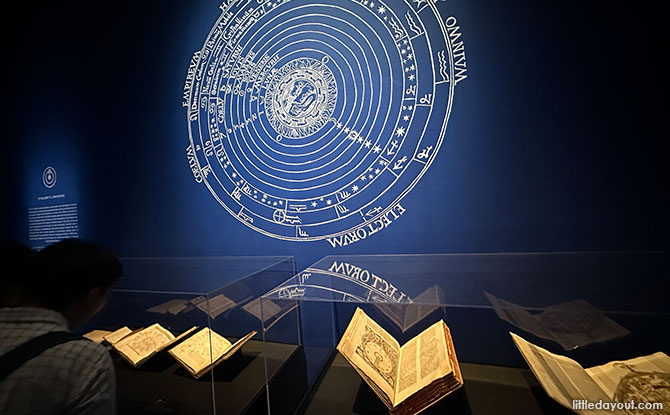
The first section of Mars: The Red Mirror explores how Mars was perceived by ancient cultures and how our understanding of our place in the universe has been slowly unveiled over the centuries.
In Greek and Roman mythology, Mars has always been looked upon as the god of war. This was how the planets were looked upon in the past. This association was also found in other cultures and reflected in the names given to the planet such as Nergal, Mangala, Harmakhis, Auqakuh and Ares.
Not just a western conceptualisation, this association can be found in ancient Asian cultures too. For example, in India, Mars was referred to as Mangala and regarded as a warrior god.
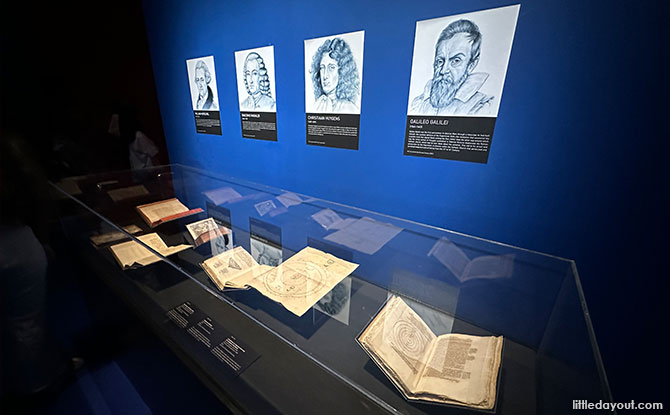
However, mankind’s relationship with Mars has changed over time – shifting away from worshiping the planets as gods to looking at it through scientific lenses.
One early attempt at this was the Ptolemy model of the universe. Devised by mathematician and astronomer Claudius Ptolemy, it had the Sun, Moon, planets (including Mars), and stars revolving around the Earth.
This view of the universe was up-ended 1,300 years later in the 16th century when Nicolaus Copernicus proved that the Earth moved around the Sun.
On display at this first blue zone of the exhibition are rare old books and facsimiles that provide an abridged look at how man’s understanding grew over the centuries.
Science and Fiction of the Red Planet
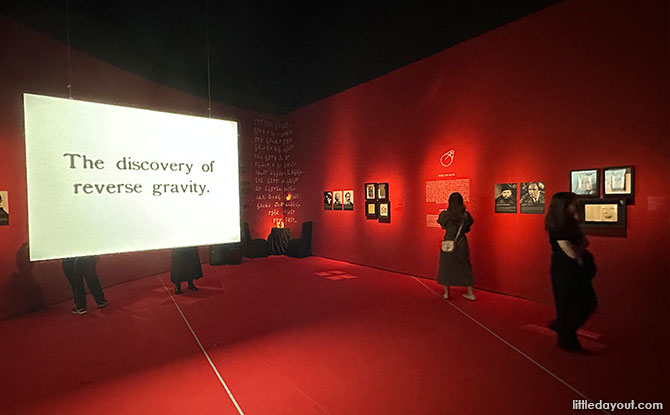
The next section of Mars: The Red Mirror goes into the stories that shaped the perception of the planet and our relationship with it in the 19th and 20th centuries.
It examines the dialogue between the science community of astronomers, engineers and inventors, and creatives like writers and film-makers in shaping the public understanding of the Red Planet.
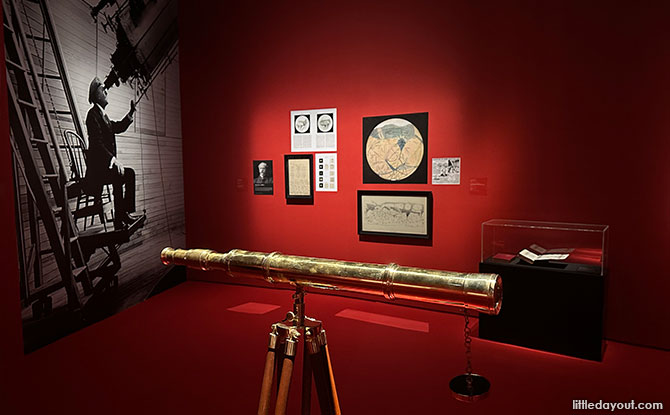
Learn about Italian astronomer Giovanni Schiaparelli, an early pioneer of making maps of Mars. Look out for two maps of his famous 1877 observations of the Red Planet that include drawings of a network of linear features he observed on the surface of Mars.
He termed them ‘canali’ which was mistranslated into English as ‘canals’, sparking off a frenzy of interest in search of ancient Martians that must have built the “structures”.
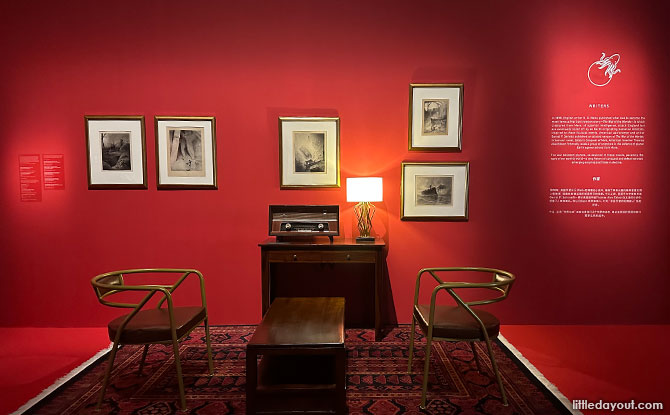
There is also an area that recreates the setting for the iconic radio broadcast of the story The War of the Worlds by Orson Welles in 1938 that sparked off panic amongst radio audiences who believed it was an actual emergency announcement.
Take a seat at a cinema and watch line-up of films and documentaries about Mars, ranging from movies that dominated suburban drive-in cinemas to an episode of American astronomer Carl Sagan’s famous television series Cosmos, which explores the search for Martian life.
Mars in the Anthropocene
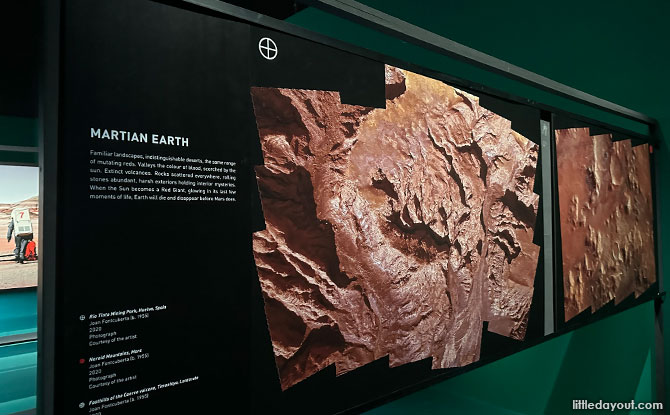
The last section of Mars: The Red Mirror is a chance to reflect on our relationship with Mars in the present day.
With the ambitions like manned missions to Mars being planned and talk of Mars being “Planet B”, this green zone invites contemplation on whether we should be heading to another planet when our own is in crisis.
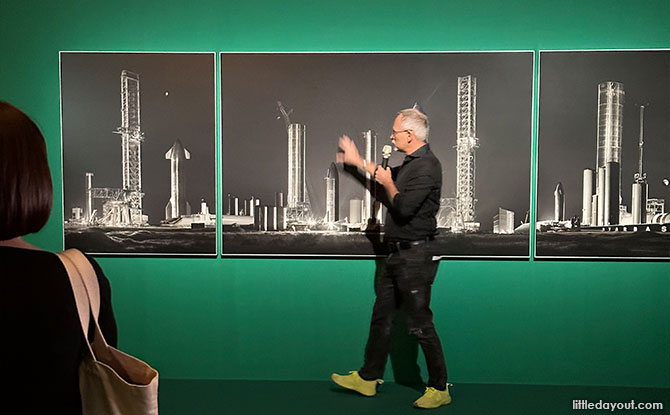
There are works by Michael Najjar, who has undertaken astronaut training, that document the development of manned space exploration.
One of the highlights is a four-metre inflatable sculpture of Mars by British artist Luke Jerram that features detailed NASA imagery of the Martian surface.
Other works to look out for include The Wilding of Mars by Alexandra Daisy Ginsberg, a nod towards the idea of sending plants to Mars first.
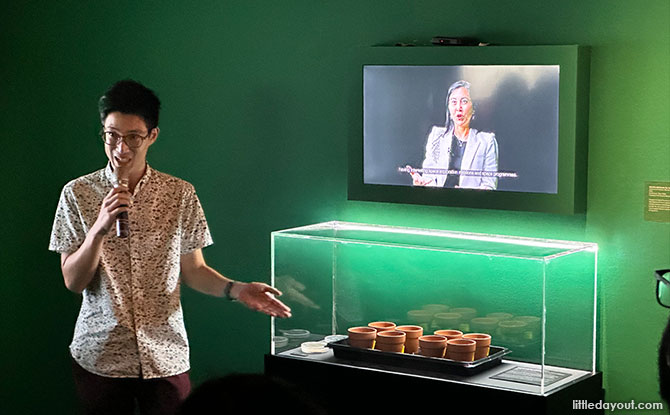
This is echoed in a terrarium in the gallery that features a scientific experiment by Space Faculty and Genome Institute of Singapore to explore how plants may grow in Martian soil. The terrarium compares the growth of plants in normal soil with soil designed to simulate the conditions on Mars.
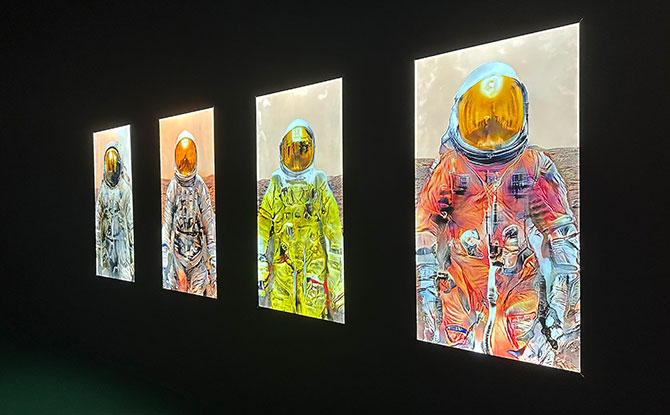
The exhibition ends with Marsonauts by Swiss artist Nero Cosmos. Using an AI algorithm, Cosmos creates unique images of astronauts that he calls “marsonauts”. He has vowed to create a new “marsonaut” image every day until the first astronaut steps foot on Mars.
Programmes at Mars: The Red Mirror
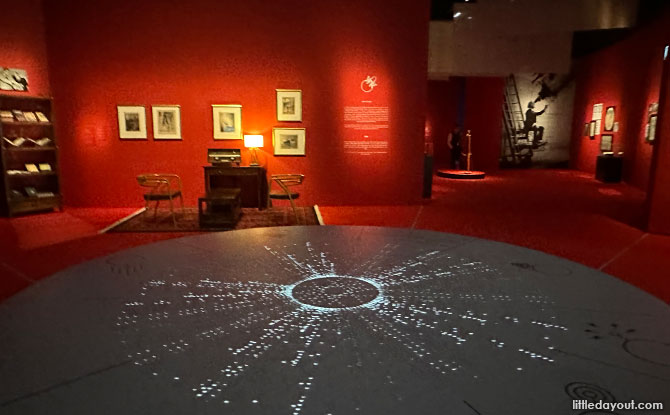
There will be an opening symposium on 25 November 2023. Humanity Reimagined – Mars Opening Symposium invites visitors to delve deeper into how Mars has captured humanity’s collective imagination and what it represents.
The programme also discusses the multiplanetary future of humans and how designing for Mars might offer new tools in tackling the climate emergency on Earth.
Visitors can also join public guided tour from 28 November, Tuesday, 4pm and explore the fascinating world of Mars with a Museum Education Specialist. Discover the cultural influences and science of the Red Planet, from ancient tales to present day space missions. Each tour is limited in capacity and is ticketed at $5 per participant. Register here.
Mars: The Red Mirror – Especially for Families
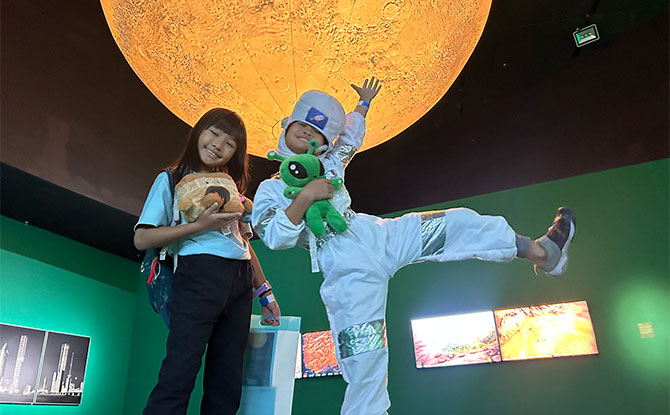
From 4 December, visitors aged 7 and above can also embark on a quest within the exhibition to discover the wonders of the Red Planet. By scanning a QR code at the entrance, visitors can kickstart their expedition to explore ancient sculptures and paintings as well as learn about notable figures, space missions and Mars itself through fun facts, games and quizzes.
This activity is complimentary to all Mars: The Red Mirror ticket holders, and is recommended for kids aged 7 and above.
In addition, on weekdays from December till February, there will be Drop-In: Create Your Own Martian Animation activity. In this drop-in activity, visitors can make their own flipbook and animate their story of travelling to Mars.
Get more details about the exhibition Mars: The Red Mirror at ArtScience Museum.
If you enjoyed this story, you may also be interested in finding out what else is taking place in November and December in Singapore.






